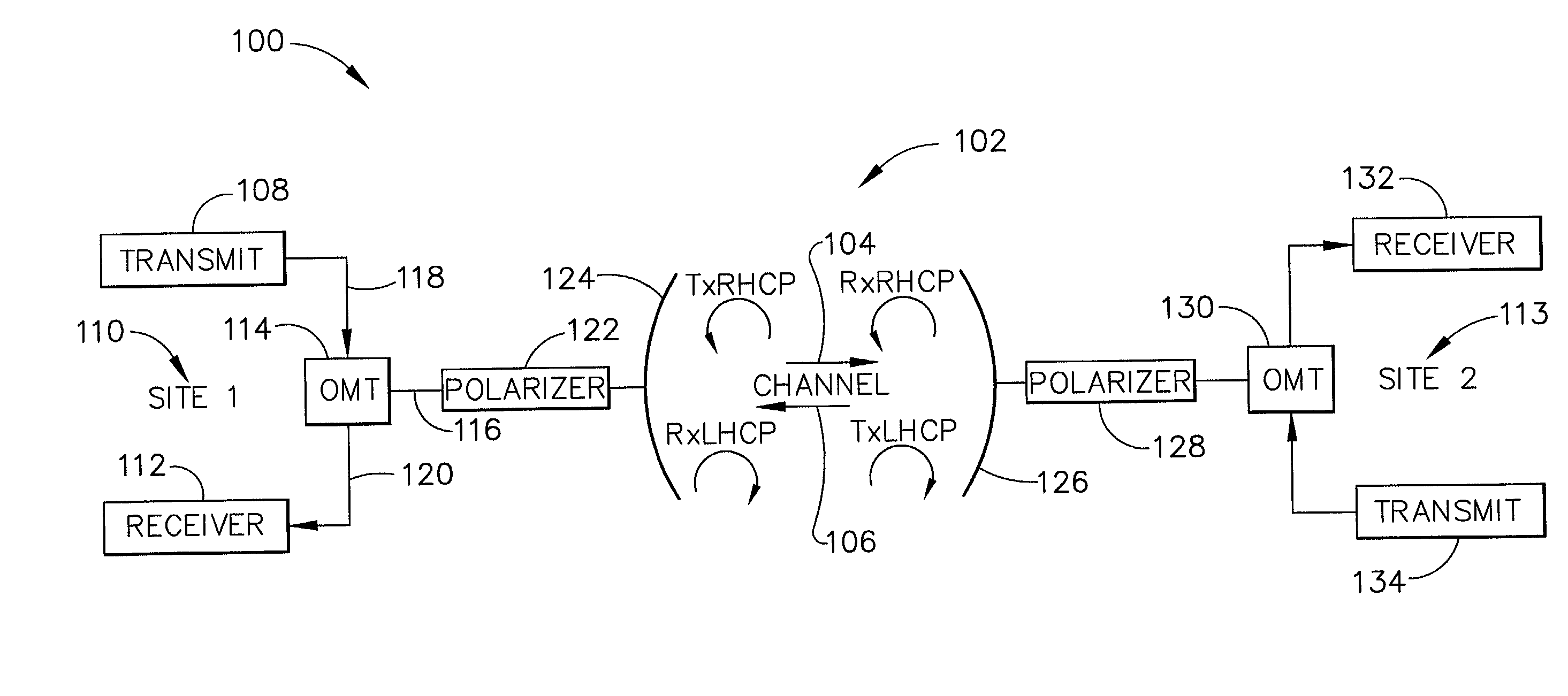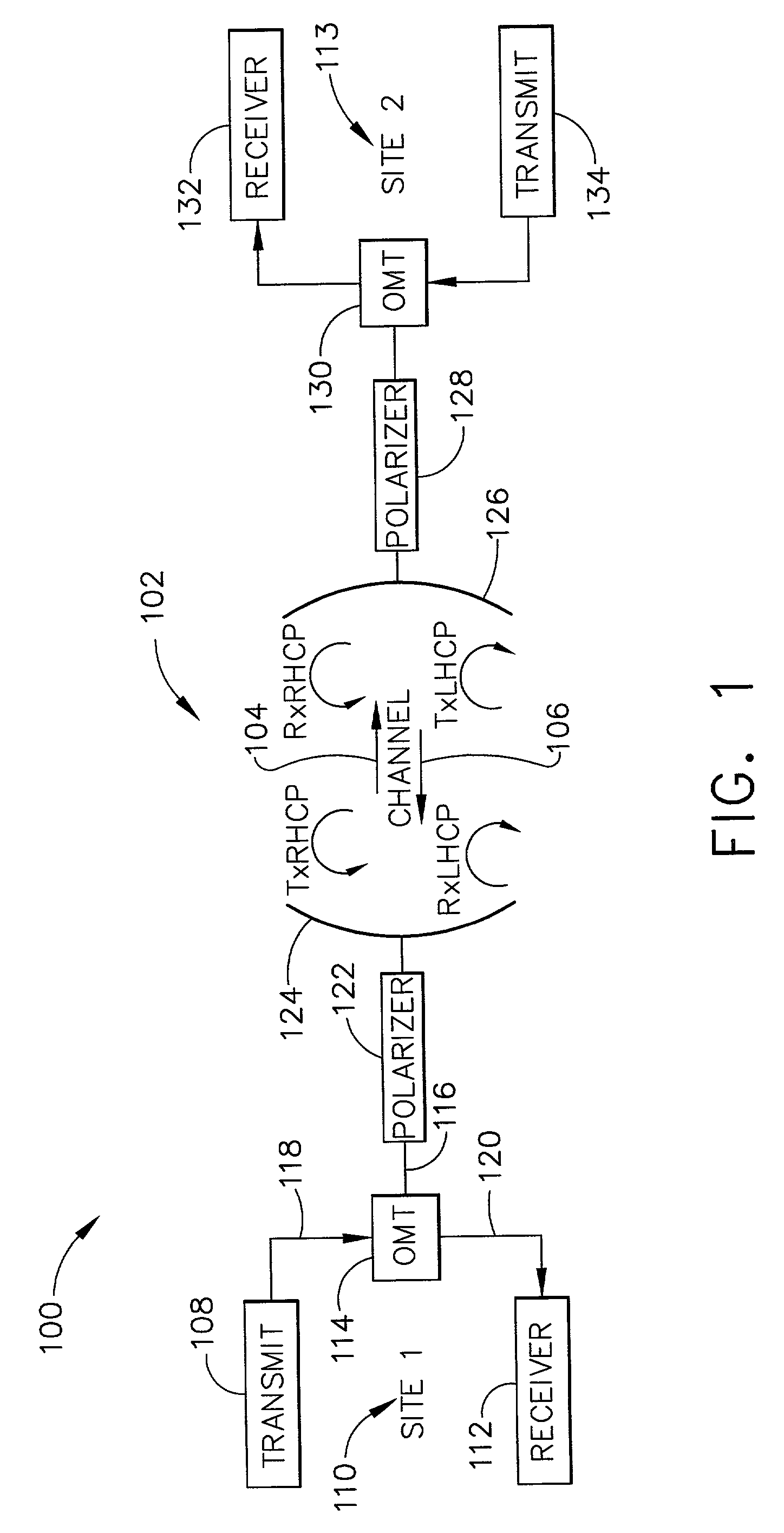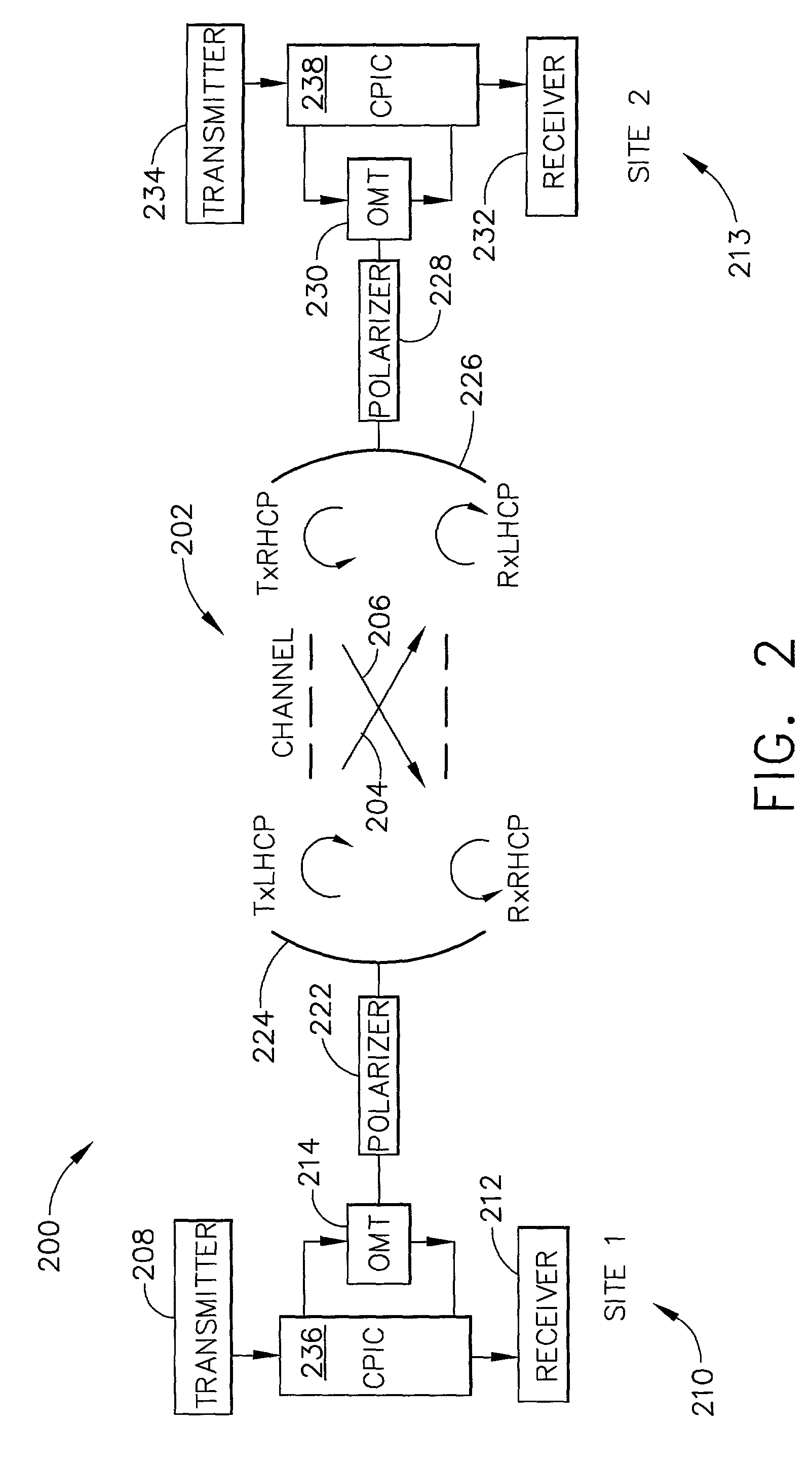Polarization division duplexing with cross polarization interference canceller
a cross-polarization interference canceller and polarization division technology, applied in the direction of line-fault/interference reduction, amplitude demodulation, pulse technique, etc., can solve the problems of achieving more bandwidth-efficient modulation, requiring more complex and expensive hardware, and limited capacity of current wireless systems, so as to effectively take advantage of frequency reuse
- Summary
- Abstract
- Description
- Claims
- Application Information
AI Technical Summary
Benefits of technology
Problems solved by technology
Method used
Image
Examples
Embodiment Construction
[0022]The following detailed description is of the best currently contemplated modes of carrying out the invention. The description is not to be taken in a limiting sense, but is made merely for the purpose of illustrating the general principles of the invention, since the scope of the invention is best defined by the appended claims.
[0023]The present invention provides a full duplex telecommunication system that effectively takes advantage of frequency reuse using circular polarization. One embodiment of the present invention takes advantage of frequency reuse by implementing polarization division duplexing (PDD) for a full duplex wireless telecommunication system. Polarization division duplexing according to one embodiment uses opposite circular polarizations for forward and return links to separate transmit and receive signals at each site, for example, by transmitting a forward link on one circular polarization and receiving the return link on the opposite polarization at a site...
PUM
 Login to View More
Login to View More Abstract
Description
Claims
Application Information
 Login to View More
Login to View More - R&D
- Intellectual Property
- Life Sciences
- Materials
- Tech Scout
- Unparalleled Data Quality
- Higher Quality Content
- 60% Fewer Hallucinations
Browse by: Latest US Patents, China's latest patents, Technical Efficacy Thesaurus, Application Domain, Technology Topic, Popular Technical Reports.
© 2025 PatSnap. All rights reserved.Legal|Privacy policy|Modern Slavery Act Transparency Statement|Sitemap|About US| Contact US: help@patsnap.com



